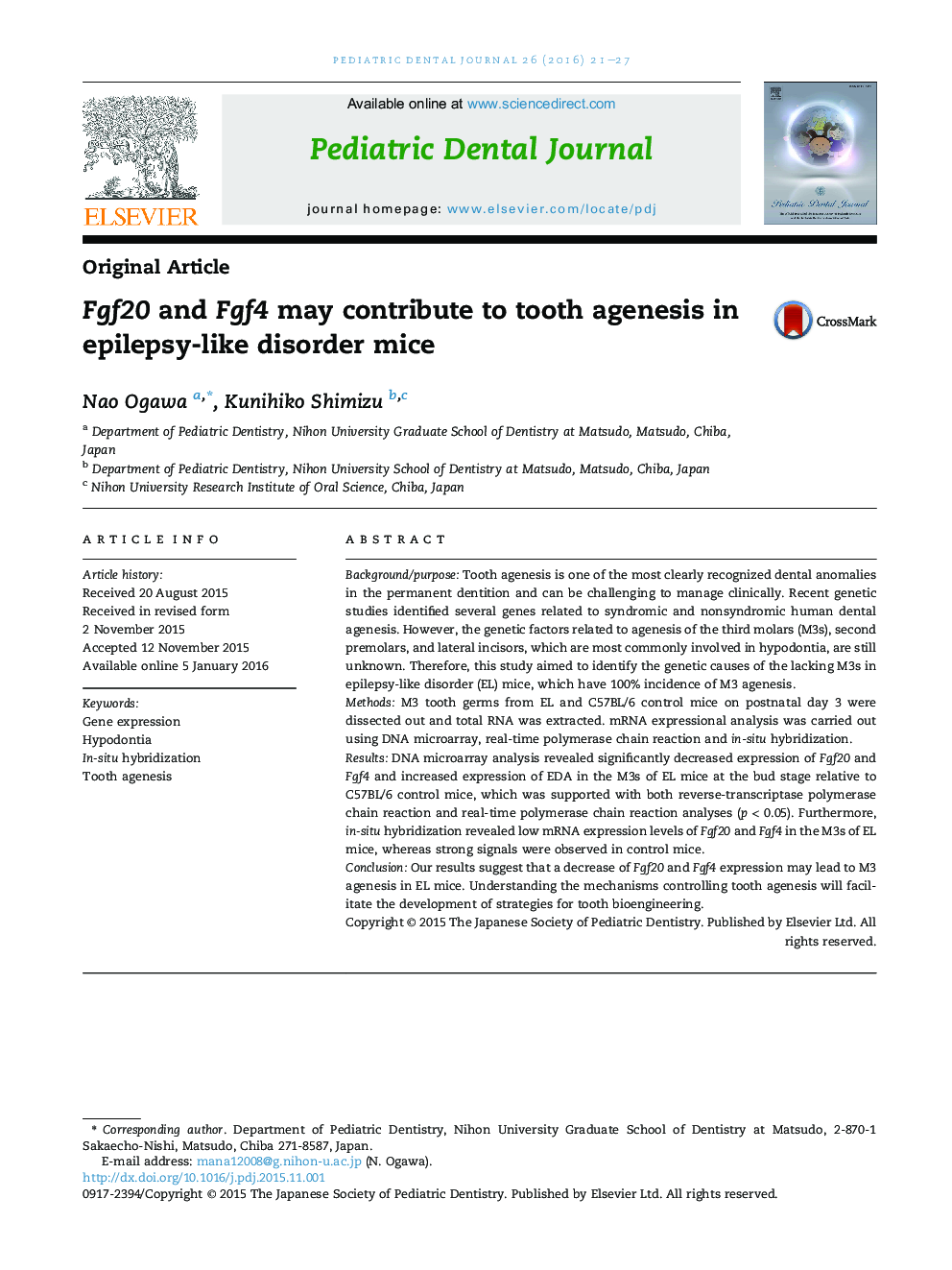| Article ID | Journal | Published Year | Pages | File Type |
|---|---|---|---|---|
| 3171478 | Pediatric Dental Journal | 2016 | 7 Pages |
Background/purposeTooth agenesis is one of the most clearly recognized dental anomalies in the permanent dentition and can be challenging to manage clinically. Recent genetic studies identified several genes related to syndromic and nonsyndromic human dental agenesis. However, the genetic factors related to agenesis of the third molars (M3s), second premolars, and lateral incisors, which are most commonly involved in hypodontia, are still unknown. Therefore, this study aimed to identify the genetic causes of the lacking M3s in epilepsy-like disorder (EL) mice, which have 100% incidence of M3 agenesis.MethodsM3 tooth germs from EL and C57BL/6 control mice on postnatal day 3 were dissected out and total RNA was extracted. mRNA expressional analysis was carried out using DNA microarray, real-time polymerase chain reaction and in-situ hybridization.ResultsDNA microarray analysis revealed significantly decreased expression of Fgf20 and Fgf4 and increased expression of EDA in the M3s of EL mice at the bud stage relative to C57BL/6 control mice, which was supported with both reverse-transcriptase polymerase chain reaction and real-time polymerase chain reaction analyses (p < 0.05). Furthermore, in-situ hybridization revealed low mRNA expression levels of Fgf20 and Fgf4 in the M3s of EL mice, whereas strong signals were observed in control mice.ConclusionOur results suggest that a decrease of Fgf20 and Fgf4 expression may lead to M3 agenesis in EL mice. Understanding the mechanisms controlling tooth agenesis will facilitate the development of strategies for tooth bioengineering.
